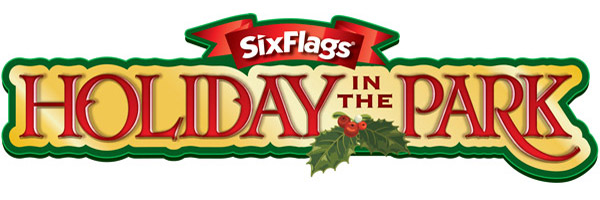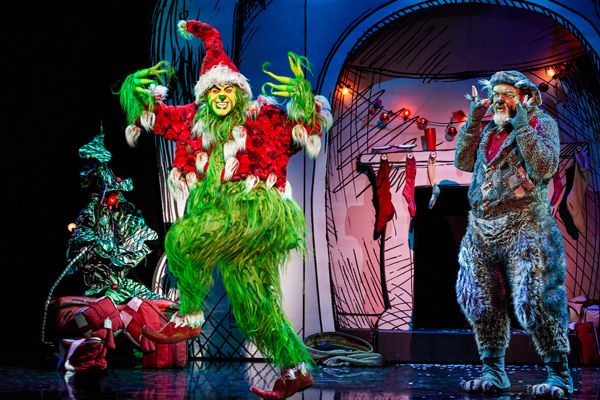By Ilene Dube, JerseyArts.com
originally published: 01/18/2024
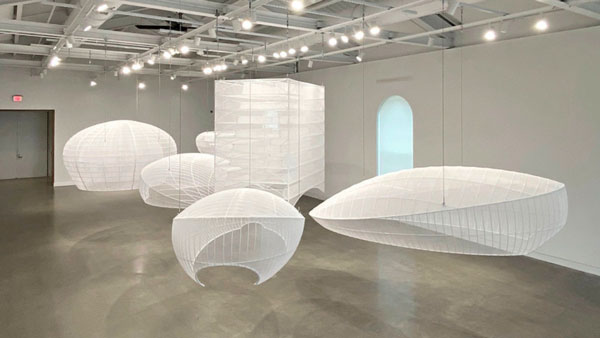
It may be the middle of winter, but two exhibitions on view at ArtYard in Frenchtown connect us to the world of plants, living things, and the lightness of being. Kendall Buster: What Blooms is on view through January 21, and Lucia Monge: While a Leaf Breathes can be seen through January 28.
Both exhibitions are filled with surprises, both on the miniature level and on a grand scale. “In my drawings, I want to evoke at once a tiny plant and a massive high rise,” Buster told ArtYard Artistic Director/Curator Elsa Mora. (The interview will appear in an upcoming exhibition catalog.) “Like Alice in Wonderland, I imagine myself shrinking very tiny and going inside a little seashell. Or on the other hand, I imagine a small vessel expanding in size to elbow its way into architecture just on the edge of being a shelter.”
In her first-floor installation, Monge looks at plants up close, rendering the microscopic view on a grand scale. She is interested in the way plants breathe – it was during the pandemic, she says in a video from her Amherst studio, that she became aware of the importance of breathing together.
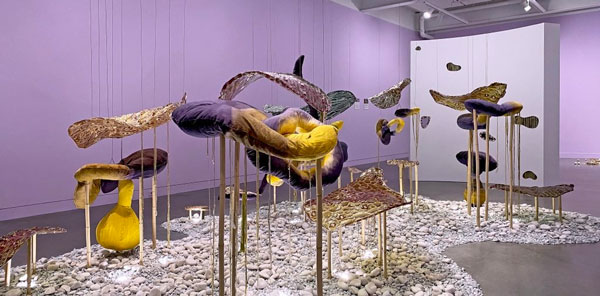
While a Leaf Breathes. Lucia Monge
All of the components of While a Leaf Breathes are made from compostable materials, such as kombucha SCOBY (symbiotic culture of bacteria and yeast), and invasive bamboo recovered in Frenchtown. She creates a bioplastic substance that gets its color from spirulina and turmeric. Beads are made from mycelium (the root-like structure of mushrooms), and a plaster-like material is made from eggshells she crushes in a mortar and pestle. Students, cover your ears: Shredded thesis papers that have been eco-dyed are another component.
“The materials in my works are prepared, fermented, cooked, and cultivated,” Monge says. “It is important for me to… have my practice be guided through their cycles, time, and urgencies.” Monge views the work as a collaboration with plants, mushrooms, bacteria, and other living organisms. Two enormous seed pods at either end suggest fertility – she is giving life to new forms.
“The exhibition is exploring plant tempo, time, urgencies, and how they are adapting,” says ArtYard Communications Manager Meghan Van Dyk. Even the lighting changes, coming up and going down, mimicking natural light from the sun.
In all my visits to ArtYard, this was the first time I was made aware of the teeny tiny galleries within the large spaces. Known as VSG – very small galleries – they are tucked into the wall behind what look like, for example, bronze mailbox doors from a prewar New York City apartment. Yet open the door, look inside, and there’s much more than a stack of bills.
For Monge’s exhibition, the VSG is a little screening room for a video of a leaf, emphasizing the need to slow down and look at nature.
A native of Peru and on the faculty at Amherst College, Monge has, for 13 years organized Plantón Móvil, a yearly walking forest performance that has led to the creation of public green spaces in cities such as Lima, London, Providence, Minneapolis, New York, and soon in Paris. "Plantón" is a Spanish word meaning both sapling and sit-in or peaceful protest. Participants create a walking forest, or other plant-based biome, by parading with plants attached to their bodies. The parade ends at a park or other site in which the sprouts are planted in the ground to grow. The goal is to not only plant plants but to learn from them. “In walking with and among the pieces of a soon-to-be prairie, we give the plants motion,” says Monge.
Plantón Móvil started in 2010 while she was walking around Lima, her hometown, and noticing “how many trees and plants had their leaves blackened with smog, were being treated as trash cans, or even used as bathrooms,” Monge continues. “I started to put myself in their place and thought I would have left town a long time ago. Instead, they are sort of forced to sit there and accept this abuse because of their planted ‘immobile’ state. I wondered what it would be like to encounter a walking forest that had taken to the streets like any other group of people would do, demanding respect.”
Other recent projects include what she describes as a “fungi broadcast” about deforestation in Peru, and sending potato seeds to space as messengers for non-colonial visions of space travel.
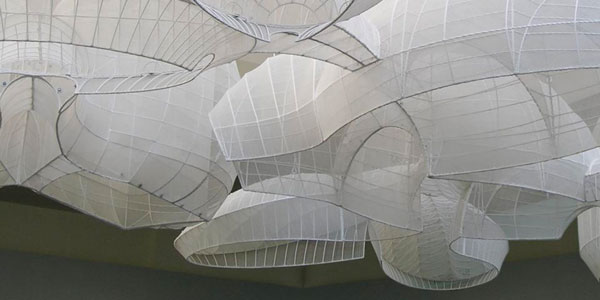
What Blooms. Kendall Buster
On the second floor, What Blooms also takes the micro and the macro view. Artist Kendall Buster studied microbiology and architecture before pursuing her sculptural practice. A grid of digital drawings on one wall suggests designs in nature: pods, seeds, cells, shells, domes, reproductive organs, and crystals.
The enormous space is balanced with two contrasting entities: a suspended white “floating city organism” and a dark, grounded fortress-like form. The subtitle of the first is “What Blooms in Weightless Dreams.” Visitors are invited to stand inside the structures – made from steel frames covered with a mesh-like cloth.
The heavier forms at the other end of the room are referred to as “What Blooms in Extreme Circumstances.” With their sharp angles and rivets, the shapes suggest Futurism, Fritz Lang’s Metropolis, even Darth Vader. One can almost hear “Ride of the Valkyries.” The apocalypse is near.
These are closed forms; unlike “Weightless Dreams,” these cannot be entered. It’s almost as if “Extreme Circumstances” is the negative space from “Weightless Dreams.” Viewers are invited to ponder how the two relate.
In the VSG here – this one behind a brass port hole – we see a metal birdcage. It gets me thinking about being trapped, whether in an airy cage or a mausoleum.
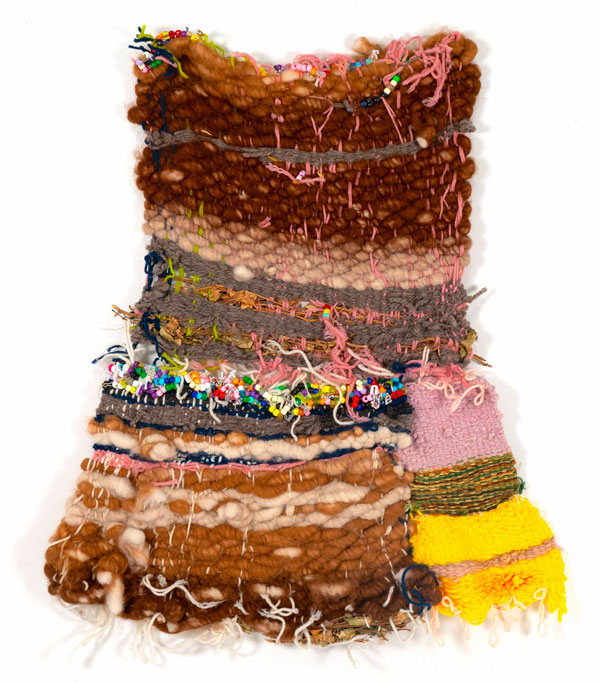
You Come to Life. Ricky Bearghost
Also on view through January 28 is You Come to Life, featuring artwork by BJ Armour and Ricky Bearghost. It is curated by Studio Route 29, a Frenchtown-based progressive art studio for artists with disabilities that provides space, materials, and support.
ArtYard offers many surprises throughout in addition to live performances in its 162-seat theater, from which is suspended a chandelier by the artist Willie Cole made from upcycled plastic water bottles.
Frenchtown, NJ | Now through January 21 and 28, 2023
About the author: Driven by her love of the arts, and how it can make us better human beings, Ilene Dube has written for JerseyArts, Hyperallergic, WHYY Philadelphia, Sculpture Magazine, Princeton Magazine, U.S. 1, Huffington Post, the Princeton Packet, and many others. She has produced short documentaries on the arts of central New Jersey, as well as segments for State of the Arts, and has curated exhibitions at the Trenton City Museum at Ellarslie and Morven Museum in Princeton, among others. Her own artwork has garnered awards in regional exhibitions and her short stories have appeared in dozens of literary journals. A life-long practitioner of plant-based eating, she can be found stocking up on fresh veggies at the West Windsor Farmers Market.
Content provided by
Discover Jersey Arts, a project of the ArtPride New Jersey Foundation and New Jersey State Council on the Arts.
FEATURED EVENTS
Narrow results by date, categories, or region of New Jersey.
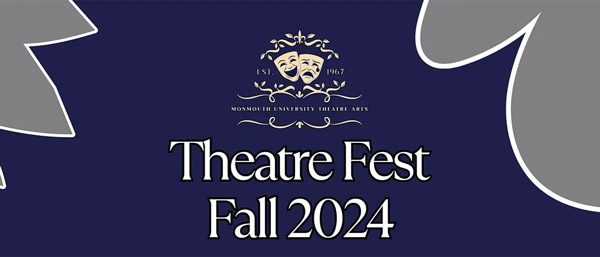
Theatre Fest Fall 2024 – Alpha Psi Omega Presents: To Be or Not to Be: Hamlet, an Abridged Staging
Saturday, November 23, 2024 @ 8:00pm
Monmouth University - Lauren K. Woods Theatre
370 Cedar Avenue, West Long Branch, NJ 07764
category: theatre
View event page for full information

Harry Potter and the Cursed Child (HS Edition)
Saturday, November 23, 2024 @ 7:00pm
Grunin Center
1 College Drive, Toms River, NJ 08754
category: theatre
View event page for full information

Harry Potter and the Cursed Child (HS Edition)
Saturday, November 23, 2024 @ 1:00pm
Grunin Center
1 College Drive, Toms River, NJ 08754
category: theatre
View event page for full information
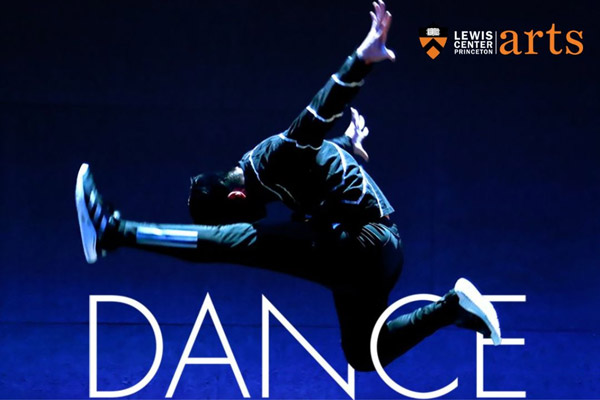
2024 Princeton Dance Festival
Saturday, November 23, 2024 @ 8:00pm
McCarter Theatre Center (Berlind Theatre)
91 University Place, Princeton, NJ 08540
category: dance
View event page for full information

2024 Princeton Dance Festival
Saturday, November 23, 2024 @ 2:00pm
McCarter Theatre Center (Berlind Theatre)
91 University Place, Princeton, NJ 08540
category: dance
View event page for full information
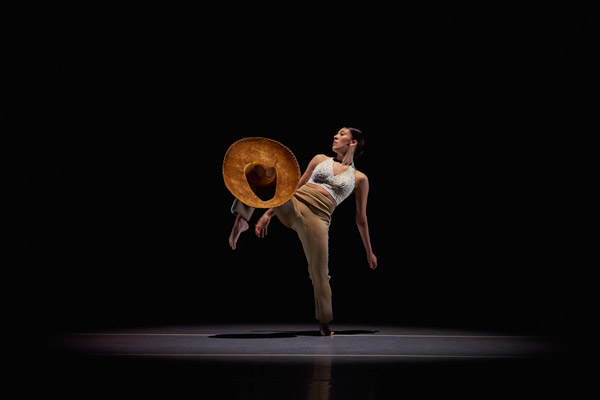
Fall Dance Plus
Saturday, November 23, 2024 @ 7:30pm
New Brunswick Performing Arts Center (NBPAC)
11 Livingston Avenue, New Brunswick, NJ 08901
category: dance
View event page for full information
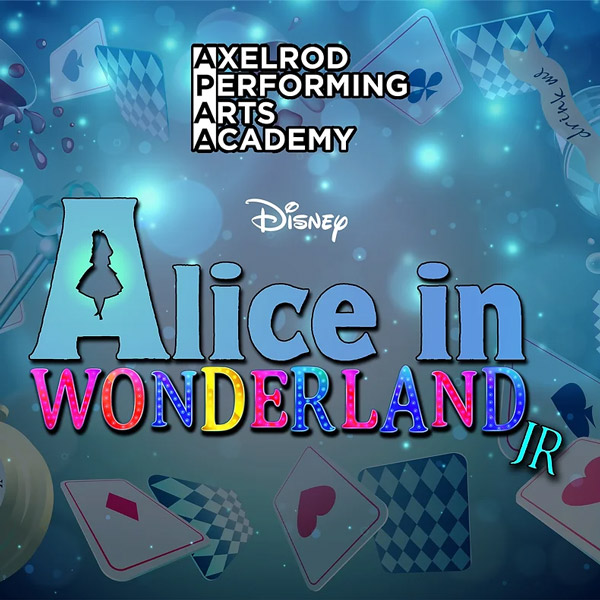
Axelrod Performing Arts Academy presents Disney's "Alice in Wonderland, Jr."
Saturday, November 23, 2024 @ 7:00pm
Bell Theater
101 Crawfords Corner Road, Holmdel, NJ 07733
category: theatre
View event page for full information

Axelrod Performing Arts Academy presents Disney's "Alice in Wonderland, Jr."
Saturday, November 23, 2024 @ 3:00pm
Bell Theater
101 Crawfords Corner Road, Holmdel, NJ 07733
category: theatre
View event page for full information
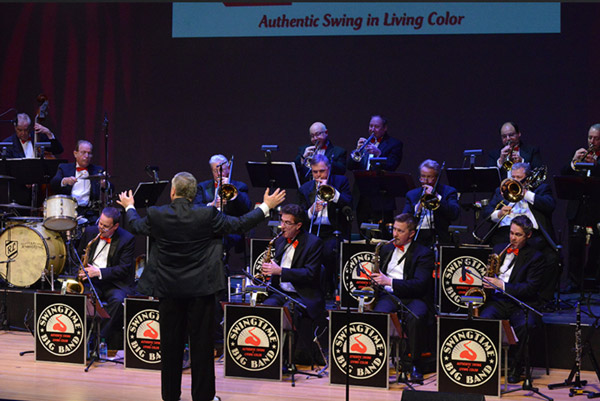
HAPPY FRANKS-GIVING! – Swingtime Big Band Celebrates Sinatra
Saturday, November 23, 2024 @ 8:00pm
Bergen Performing Arts Center (bergenPAC)
30 North Van Brunt Street, Englewood, NJ 07631
category: music
View event page for full information

Elf The Musical
Saturday, November 23, 2024 @ 7:00pm
Count Basie Center for the Arts
99 Monmouth Street, Red Bank, NJ 07701
category: theatre
View event page for full information

Elf The Musical
Saturday, November 23, 2024 @ 1:00pm
Count Basie Center for the Arts
99 Monmouth Street, Red Bank, NJ 07701
category: theatre
View event page for full information
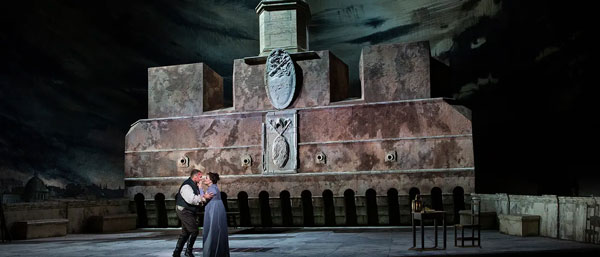
The Metropolitan Opera: Live in HD - Tosca
Saturday, November 23, 2024 @ 1:00pm
Monmouth University - Pollak Theatre
400 Cedar Avenue, West Long Branch, NJ 07764
category: theatre
View event page for full information
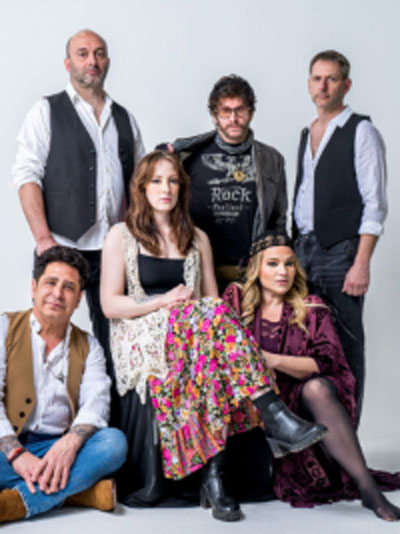
StevieMac: A Fleetwood Mac & Stevie Nicks Experience
Saturday, November 23, 2024 @ 8:00pm
William Paterson University - Shea Center for Performing Arts
300 Pompton Rd, Wayne, NJ 07470
category: music
View event page for full information
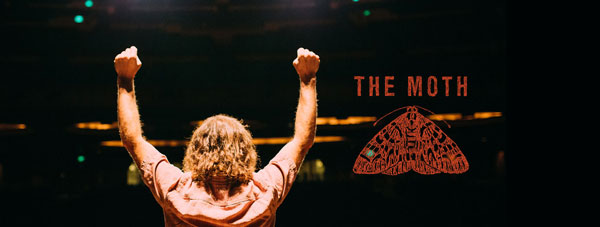
The Moth
Saturday, November 23, 2024 @ 7:30pm
McCarter Theatre Center (Matthews Theater)
91 University Place, Princeton, NJ 08540
category: community
View event page for full information
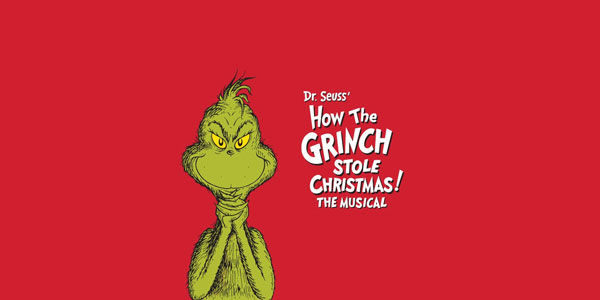
Dr. Seuss' How The Grinch Stole Christmas! The Musical
Saturday, November 23, 2024 @ 7:30pm
State Theatre New Jersey
15 Livingston Avenue, New Brunswick, NJ 08901
category: theatre
View event page for full information

Dr. Seuss' How The Grinch Stole Christmas! The Musical
Saturday, November 23, 2024 @ 3:00pm
State Theatre New Jersey
15 Livingston Avenue, New Brunswick, NJ 08901
category: theatre
View event page for full information

Dr. Seuss' How The Grinch Stole Christmas! The Musical
Saturday, November 23, 2024 @ 10:30am
State Theatre New Jersey
15 Livingston Avenue, New Brunswick, NJ 08901
category: theatre
View event page for full information
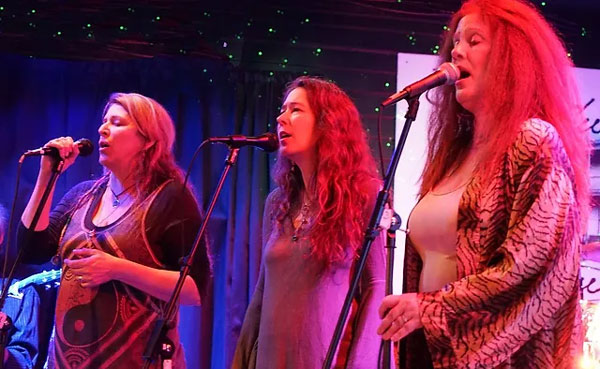
Wooden Ships Band
Saturday, November 23, 2024 @ 7:30pm
Lizzie Rose Music Room
217 E. Main Street, Tuckerton, NJ 08087
category: music
View event page for full information

Fiddler On The Roof
Saturday, November 23, 2024 @ 7:30pm
Axelrod Performing Arts Center
100 Grant Avenue, Deal Park, NJ 07723
category: theatre
View event page for full information

Fiddler On The Roof
Saturday, November 23, 2024 @ 1:30pm
Axelrod Performing Arts Center
100 Grant Avenue, Deal Park, NJ 07723
category: theatre
View event page for full information
More events
Event Listings are available for $10 and included with our banner ad packages
EVENT PREVIEWS
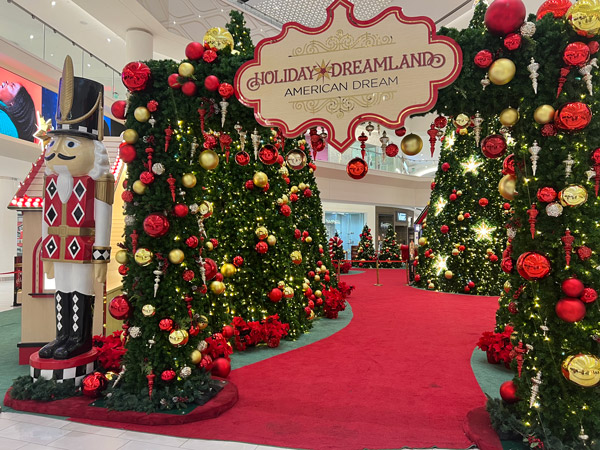
American Dream Announces Holiday Plans
(EAST RUTHERFORD, NJ) -- American Dream invites guests to spend the holidays at the one-of-a-kind center, as it transforms into a winter wonderland showcasing the very best in retail, dining and entertainment. Throughout the season, American Dream will be giving away incredible prizes, creating lasting memories and spreading joy throughout the community.
UPCOMING EVENTS
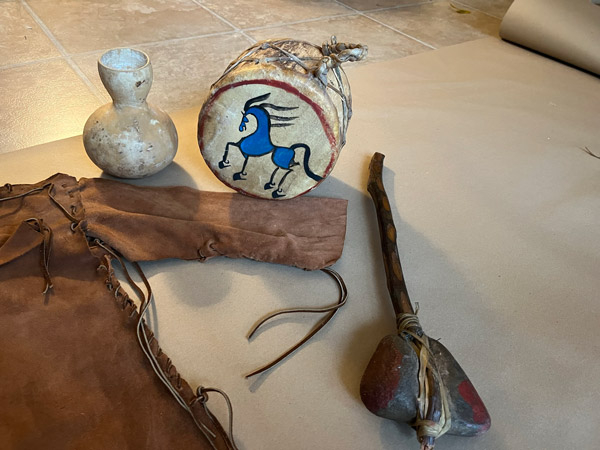
South Jersey's Indigenous Communities Celebrated in New A.C. Arts Garage Exhibit
(ATLANTIC CITY, NJ) -- A new exhibit at the Noyes Arts Garage of Stockton University will celebrate two southern New Jersey tribal communities through the display of historical documents, traditional artifacts and contemporary art. "Still Here: The Nanticoke Lenni-Lenape and Powhatan-Renape Nations of Southern New Jersey" opens October 9 and runs until January 5, 2025.





















